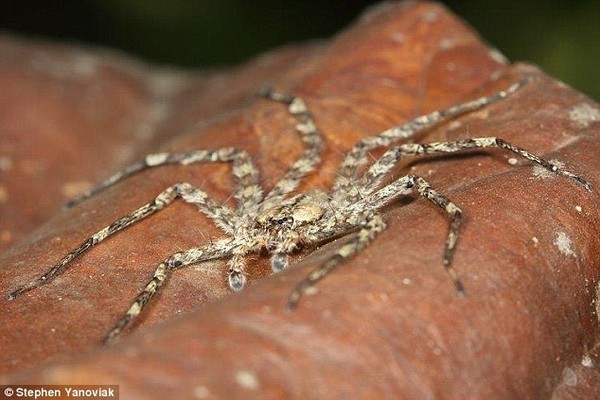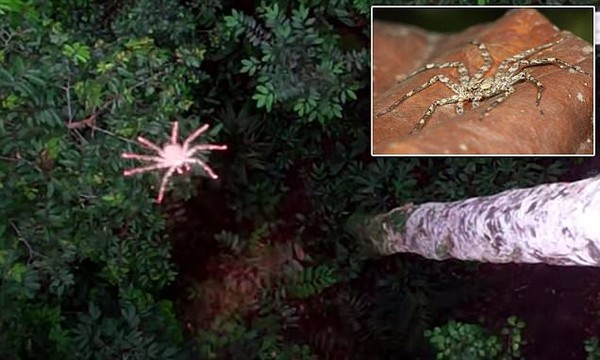Spotted spiders know to 'fly' in South America
New biologists' discoveries are a "nightmare" for people with spider scare.
Spiders have the ability to glide in the air
A group of researchers working in Peru and Panama have discovered a nocturnal spider that has the ability to navigate and glide in mid-air.

Selenop spider is quite large with a width of about 10cm.
This can be seen as a "shocking" finding for biologists, since so far no spider species possesses this special ability.
According to Stephen Yanoviak, a biologist at Louisville University in Kentucky, "We never thought that spiders could do that and of course they didn't have wings to fly like birds."

They have the ability to surf in the air.
This particular spider species belongs to the genus Selenops in the spider family Selenopidae. They are now classified as non-winged animals but can navigate in mid-air, instead of falling freely like other species.
Robert Dudly, a professor of biology at the University of California, Berkeley, said: ' I guess a lot of tree animals have this ability from snakes, lizards, ants and now spiders. If the enemy approaches, they can jump and drive to another tree if there is enough time, instead of falling to the ground and being in danger '.
Since the discovery of ants that can cling back to the tree after falling, the two scientists have studied the insects with similar abilities. For nearly a decade, they have released many insects from high trees and watched how they landed.
With this spider, experts climbed a tree 20 - 22m high, dropped the spider and recorded it. They found that these spiders are more flexible and agile than cats in mid-air. Some 'old village' spiders can go back to the trunk after falling about 4m.

Yanoviak said: ' This research is a premise for further research in the future. For example, how do these spiders look or how do they determine their driving goals? What effect does the hair on their legs have on this ability? "
The study was published in the Royal Society 's Interface magazine .
- Spotted spiders have strange legs in America
- Spotted spiders emitting a
- Spotted spiders transform into bird droppings
- Discover 5 new arachnoid spiders
- Spiders re-solidify and birds
- Science has proven: Spider is a friend, not an enemy!
- Detecting eyeless spiders
- Many new and rare spiders are found in Australia and India
- Close-up of the world's cutest wild cats
- Spiders can release silk to neutralize prey
- Science determines the time when spiders are most likely to occur in the home
- This is the color that people fear spiders should avoid wearing
 Why do potatoes have eyes?
Why do potatoes have eyes? 'Tragedy' the world's largest carnivorous life: Death becomes ... public toilet
'Tragedy' the world's largest carnivorous life: Death becomes ... public toilet Tomatoes were once considered 'poisonous' for 200 years
Tomatoes were once considered 'poisonous' for 200 years Detecting microscopic parasites on human face
Detecting microscopic parasites on human face